This is a relatively common problem & there can be many causing factors to consider.
1) Has your chimney been swept lately? If not, your problem could be caused by a build up of soot, tar or another blockage, perhaps a birds nest in your chimney. This may restrict the draw in your flue as the smoke has nowhere else to go but back down into the room.
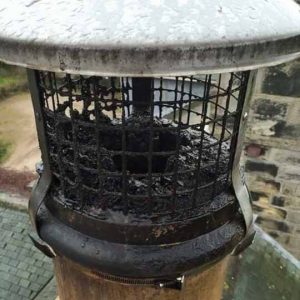
Tar is very bad for your chimney & appliance!
2) Is your chimney the correct size for your appliance? If your flue is too small, it will not be giving enough volume in the chimney for the smoke to escape. Standard open fires require at least an 8” flue, some freestanding open fire grates need a lot more, it all depends on the size of the fire opening & appliance.

3) Do you have the correct cowl or termination at the top of your chimney? If your cowl is incorrect for your appliance, it may not be letting enough free air flow through for the smoke to escape from the flue. Some cowls are made only for certain appliances, a gas cowl for example would not be adiquate for solid fuel. It is also possible for a cowl to become blocked with soot or tar, when your chimney is swept we will check for this.
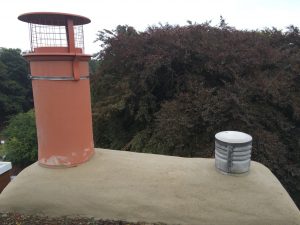
4) Atmospheric conditions? Sometimes atmospheric conditions may not be right for your chimney to work correctly. One example of this is if it’s hotter outside than it is inside the property (known as thermal inversion). This can cause a negative air pressure in the flue, forcing the smoke downwards instead of up. It’s rare to come across this situation as this will usually happen in warmer weather when you may not require a fire. Pre-warming the flue may help to get the air moving the correct way again, but if you’re ever in any doubt, it’s worth talking to a professional. There are also a number of “anti downdraught” cowls available on the market which can help with these issues.
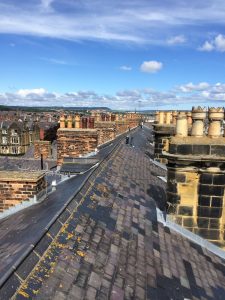
5) Could nearby objects be restricting draw? It is possible for nearby objects to effect the efficiency of your chimney. Trees, buildings & even nearby chinneypots & cowls can be a contributing factor. If you live in a valley or dip, you may also find weather & atmospheric conditions could effect the draw of your chimney more.
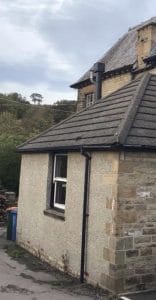
6) Do you have suitable ventilation? A property that was built before 2008 & has an appliance 5kw or over will require ventilation in the same room to ensure it works correctly. A wall or floor vent with an air flow of 100mm or more is required. If you live in a property built after 2008, you will need a vent for any appliance (this includes appliances under 5kw). It is recommended that all open fires have a vent fitted in the same room.
Never cover up a vent! This is an issue we come across all to often! It’s understandable that you may not want a draught in your room but covering a vent can be potentially dangerous. It may stop your appliance working correctly & allow a build up of dangerous carbon monoxide gasses!
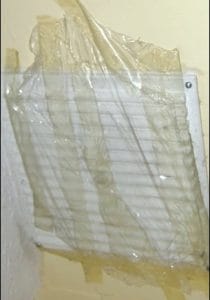
Having suitable ventilation ensures the appliance will have enough air flow to work correctly, if it cannot get it from the inside the room, it will begin to draw air down the chimney causing downdraught.
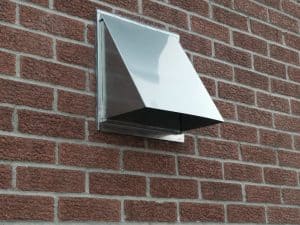
7) Are there extractor fans nearby which could conflict with the air flow to your appliance? This is not usually an issue in private dwellings, however pubs & restaurants etc.. may suffer with this issue. Powerful extractors found in large kitchens can cause problems for solid fuel appliances, drawing air the wrong way & causing negative pressure. Chimney fans are often used to combat this problem.
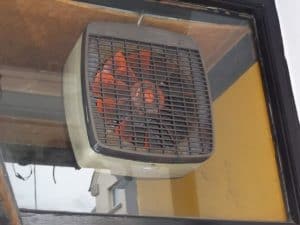
Whatever your issue, we at Rooftops & Chimneypots will endeavour to help as much as we can to keep your chimney & solid fuel appliance running smoothly!
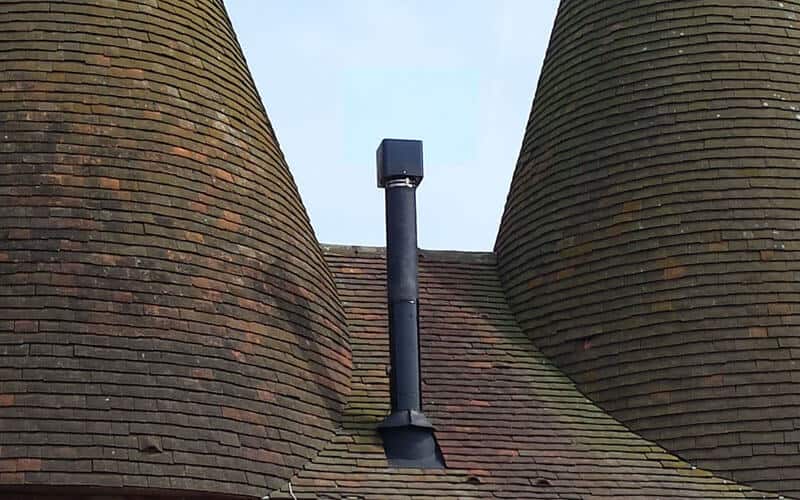
2 comments
Hi after reading your article, I’m delighted to say we have now found the cause to why we have a downdraught, for that I thank you. We got work done to our house last year and now have no draughts, however we got a new kitchen and extractor fan and have realised every time the fan is on, the smell comes out from our fire into the living room. How do we remedy this? Your help would be much appreciated.
Appologies for the late reply. Usually, if you have a downdraught issue due to an extractor fan it is becuase of insufficient ventilation (the fire is running out of the free air it needs to run correctly due to the extractor fan sucking it out of the room) the ammount of ventilation needed depends on the size & type of your fire, however a 100mm wall vent is usually sufficient. A good way to check if this will solve the problem before fitting is to open a window, you should find the fire then starts working correctly. Hope this helps!